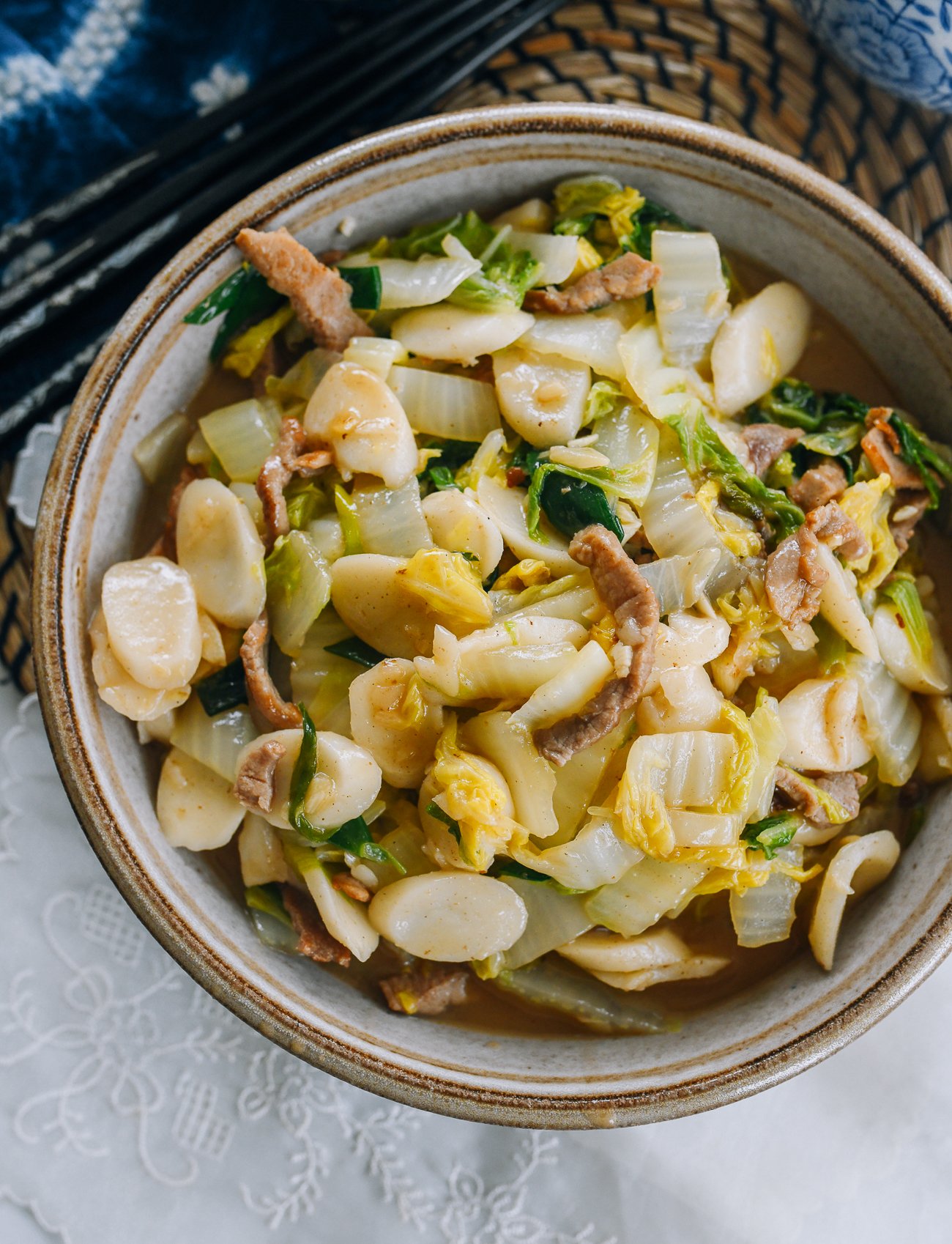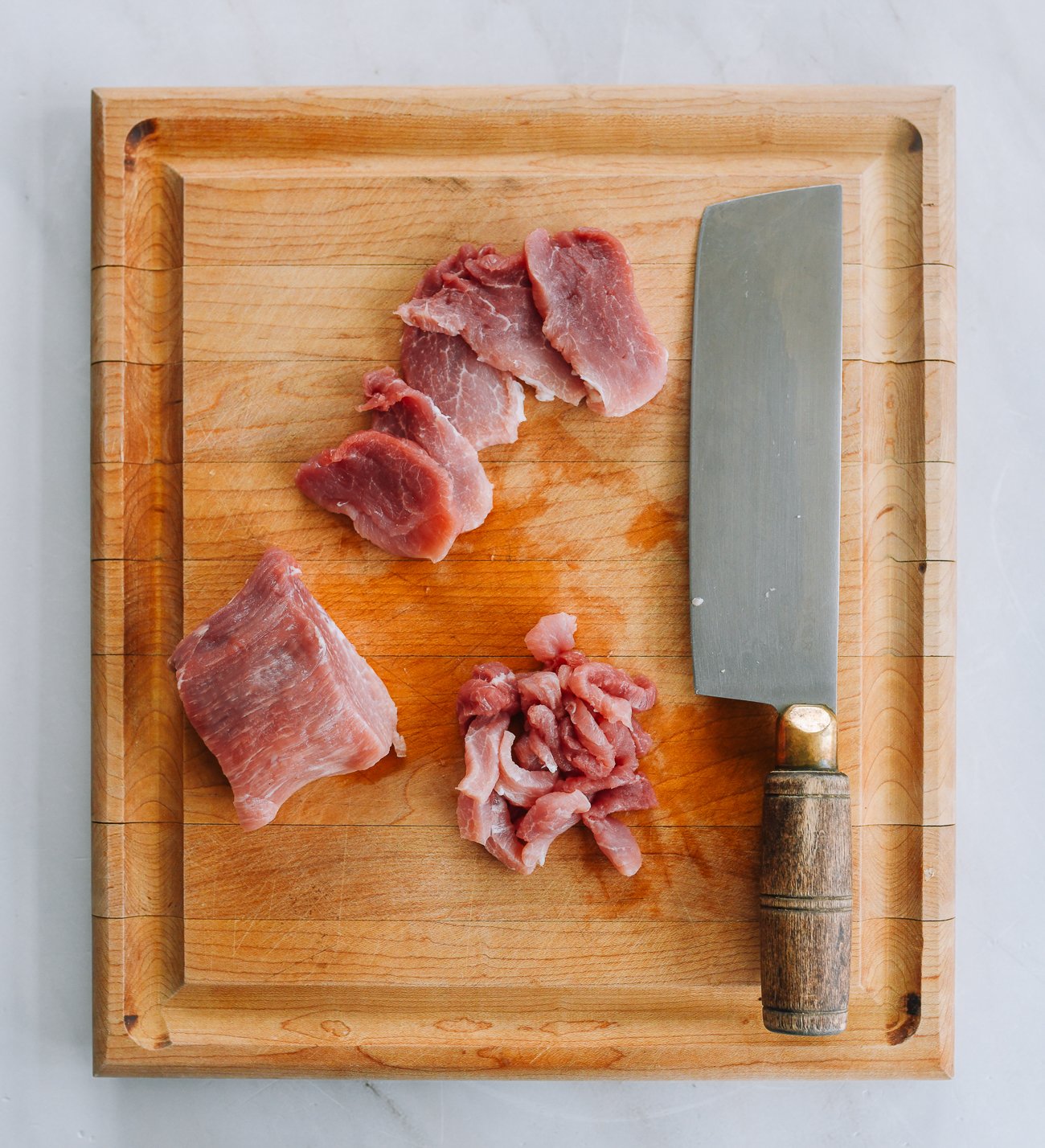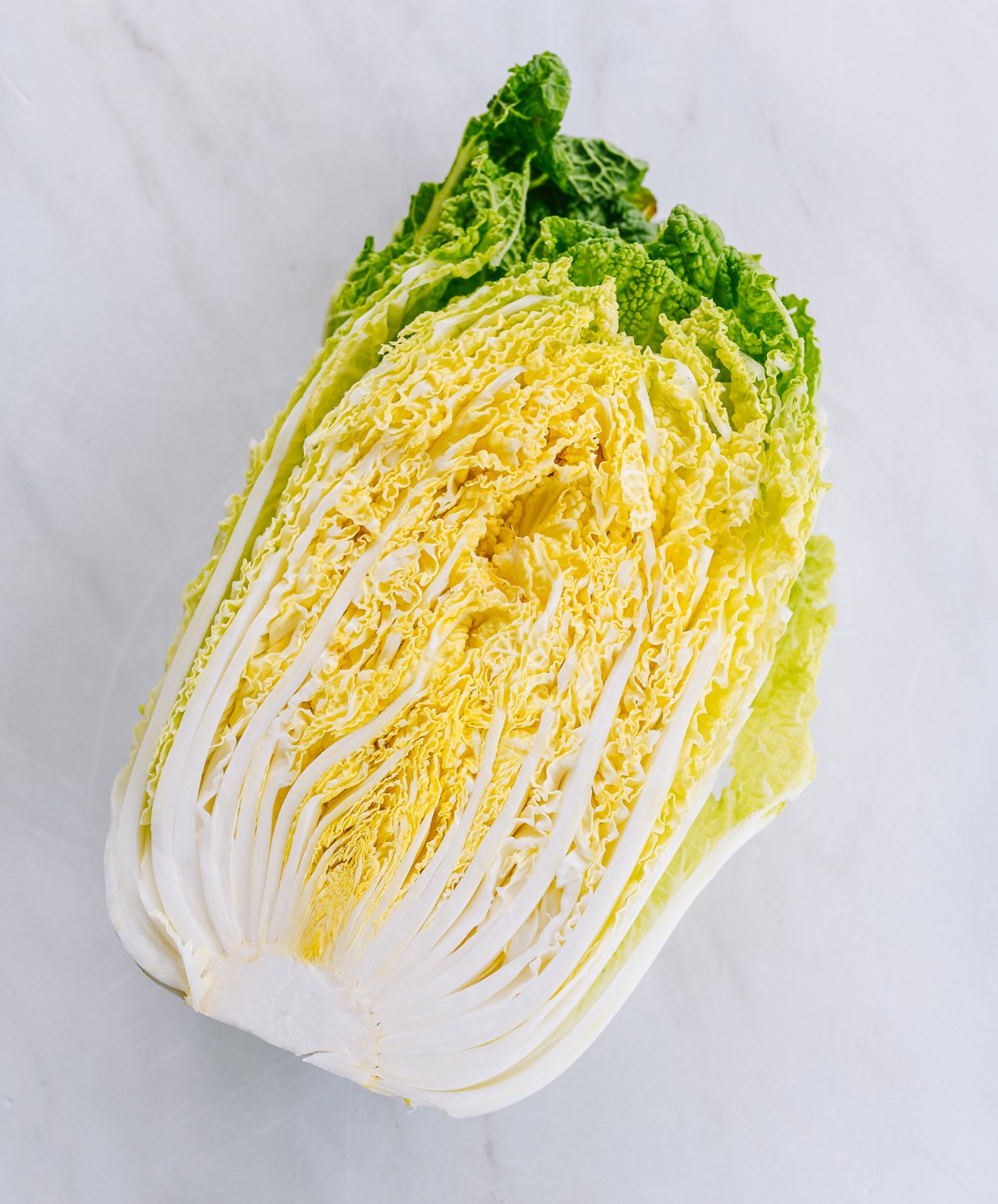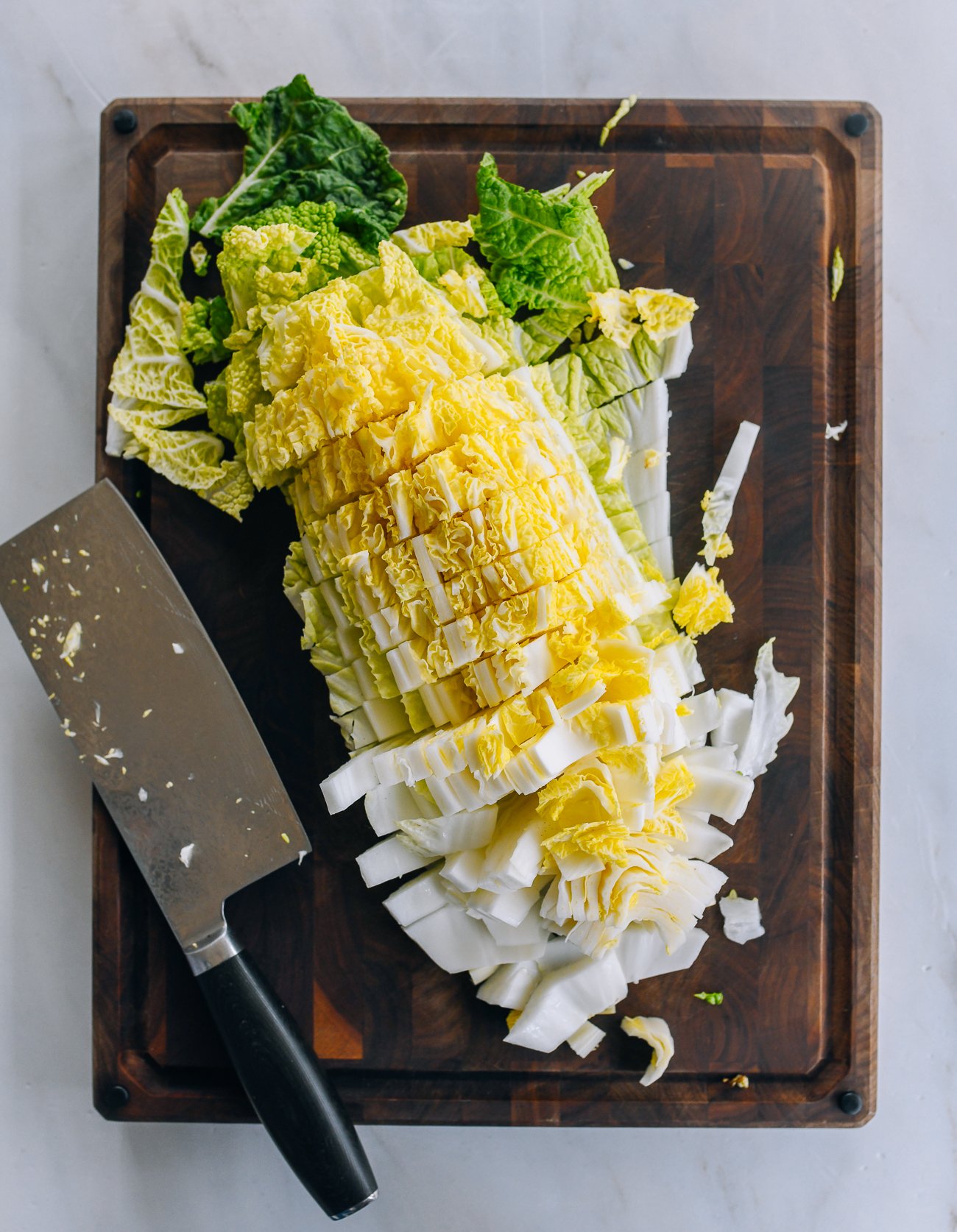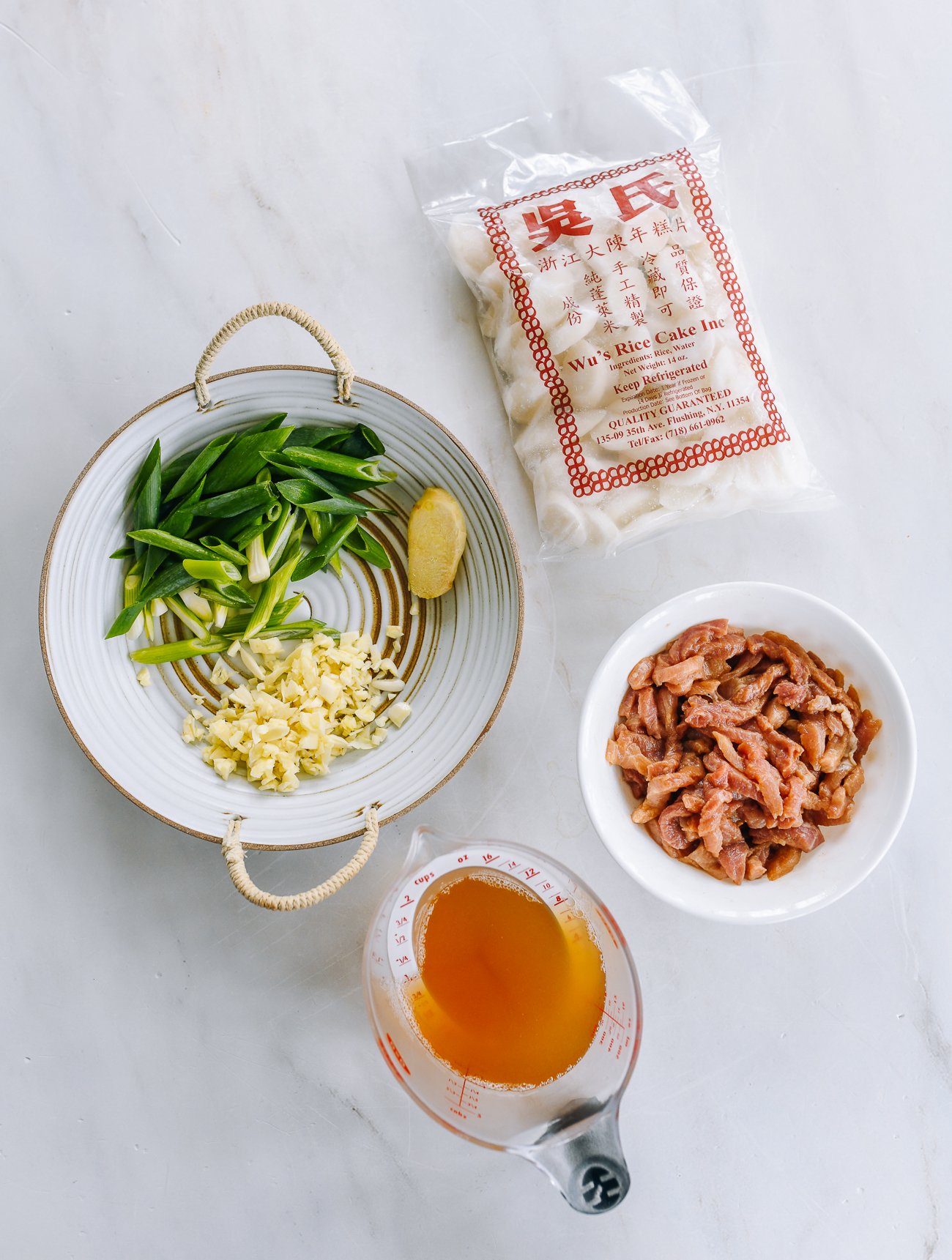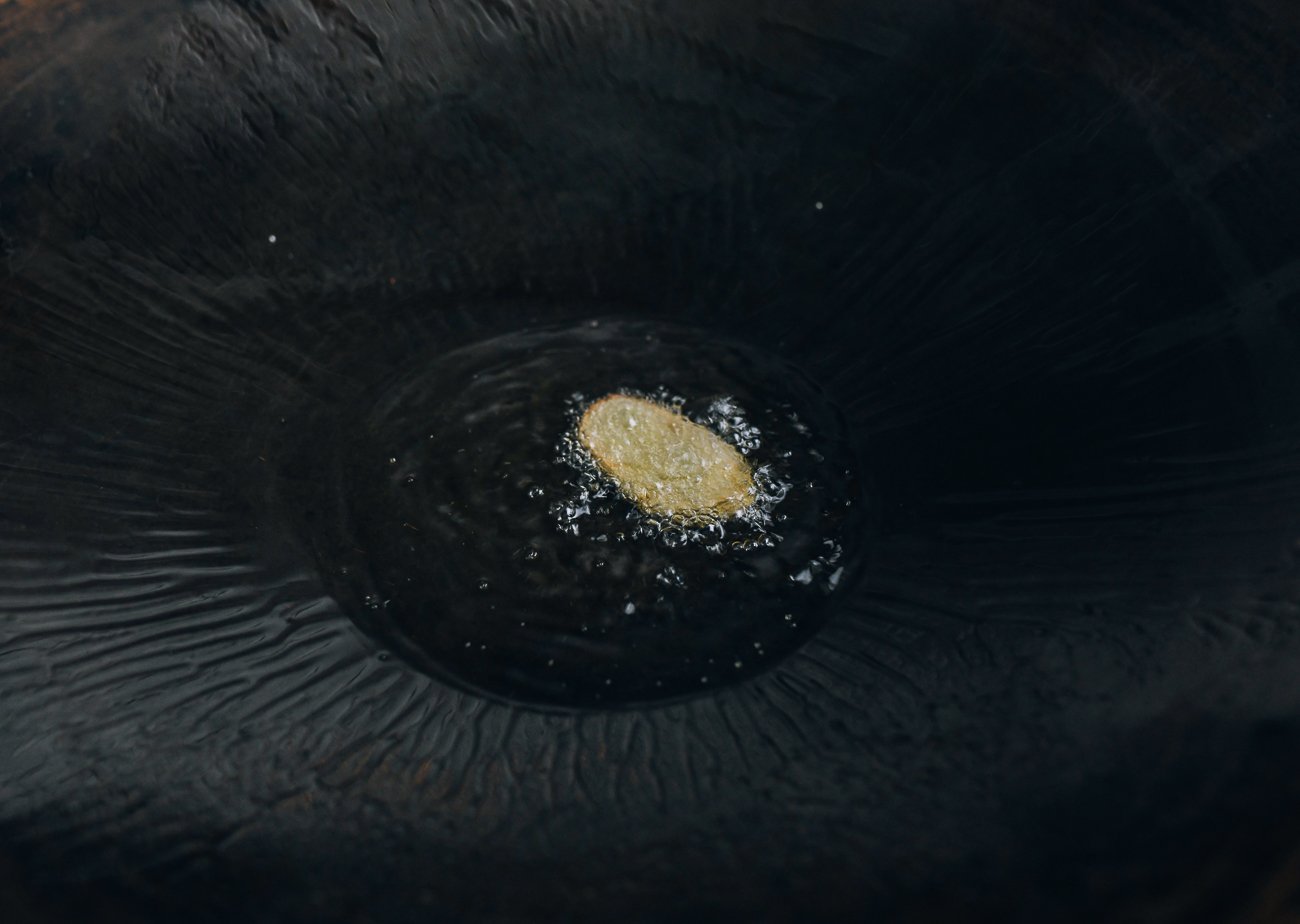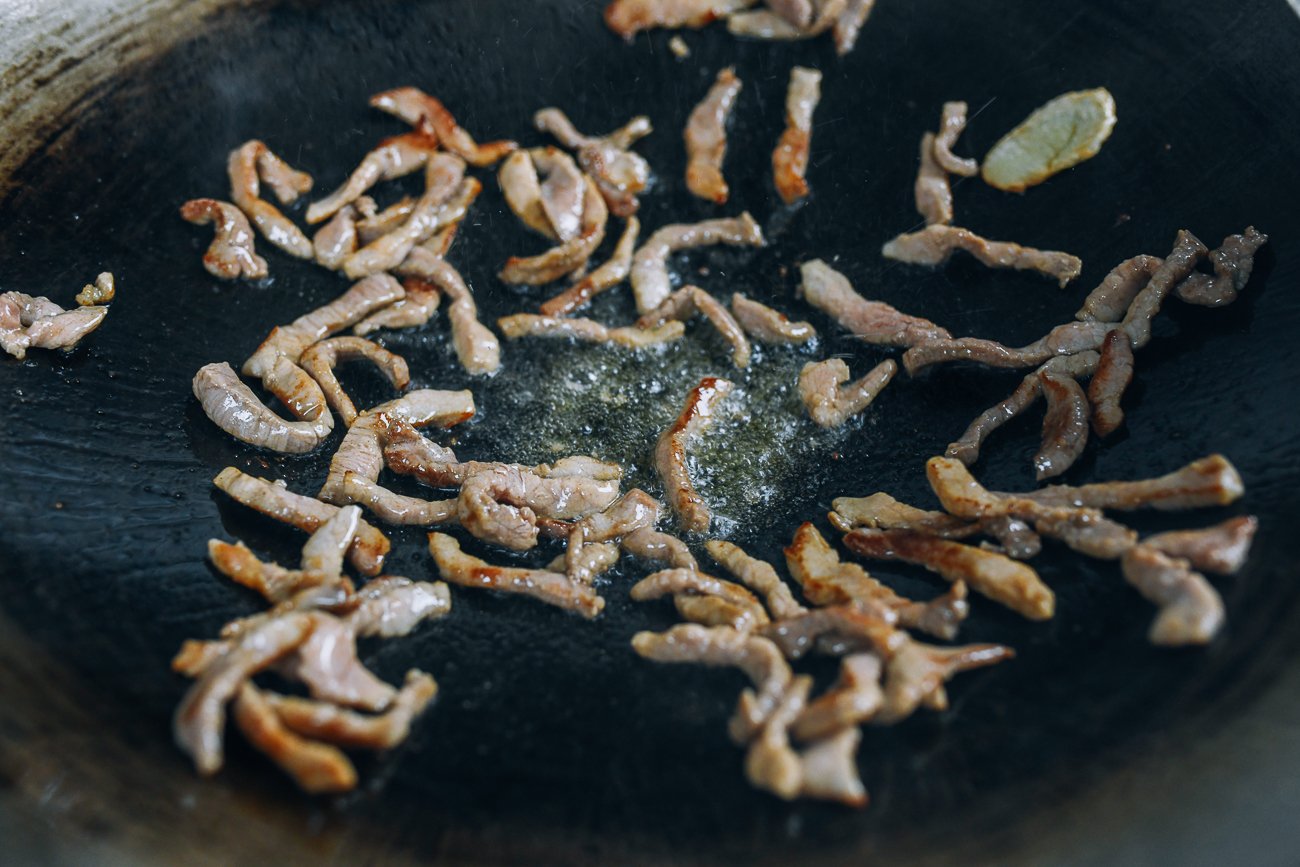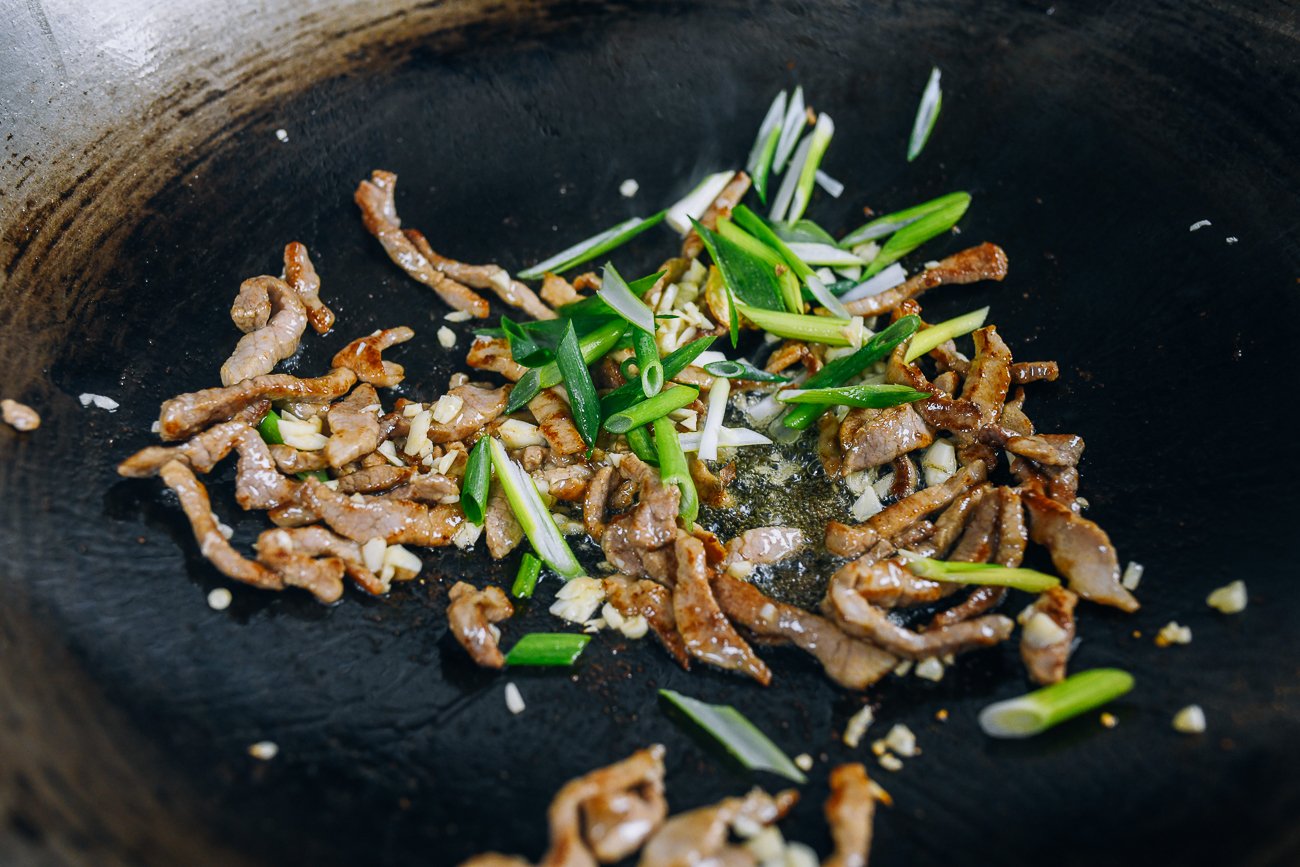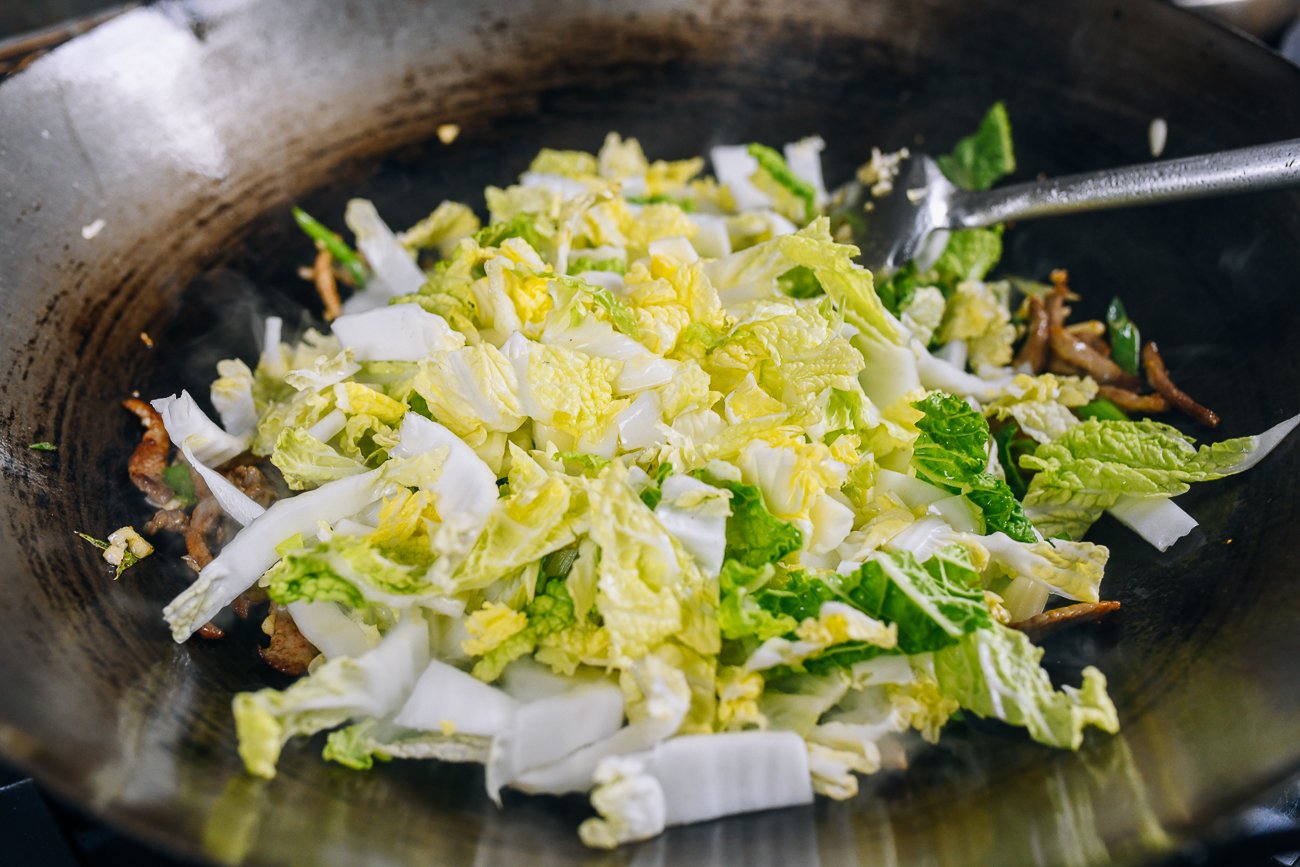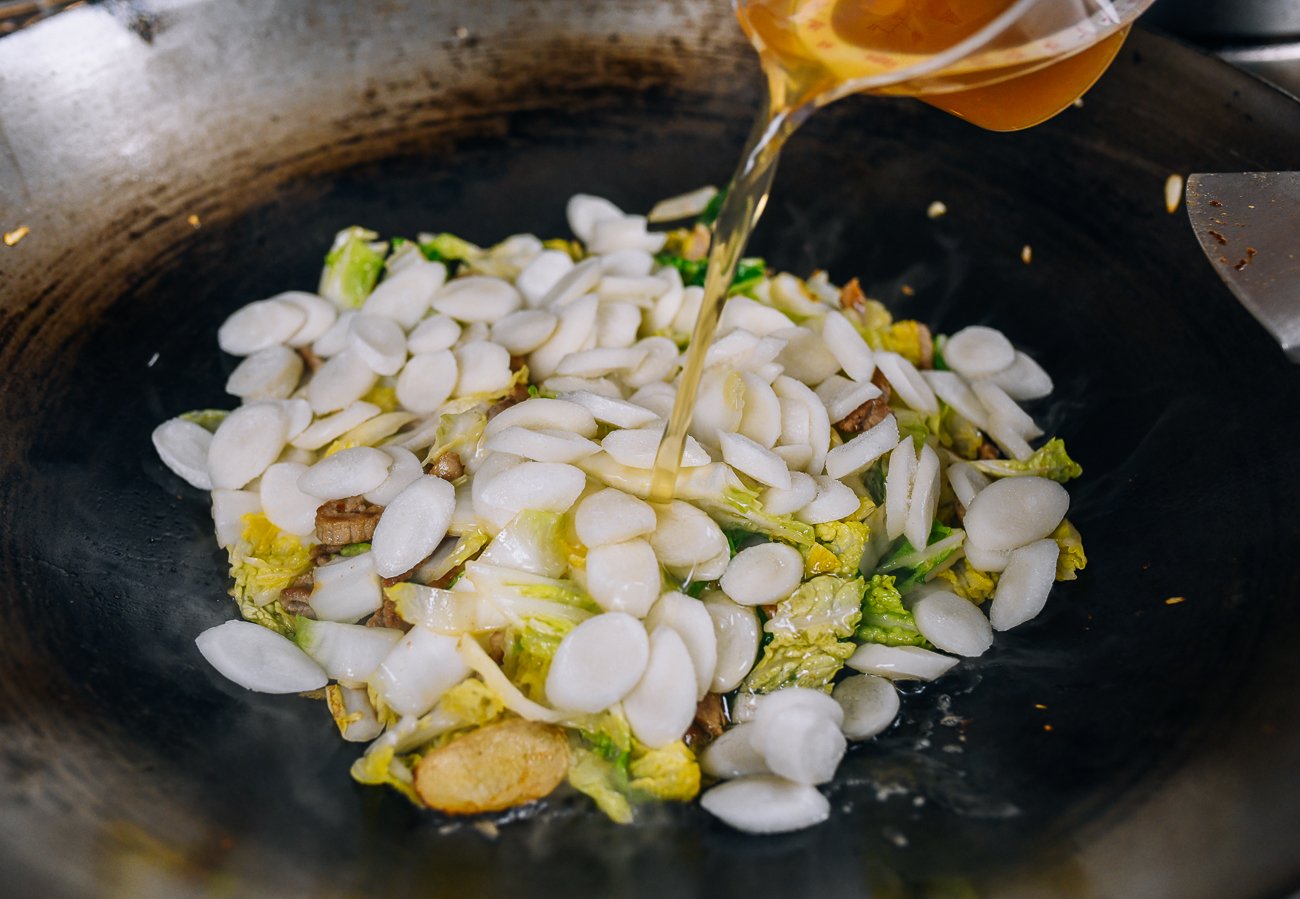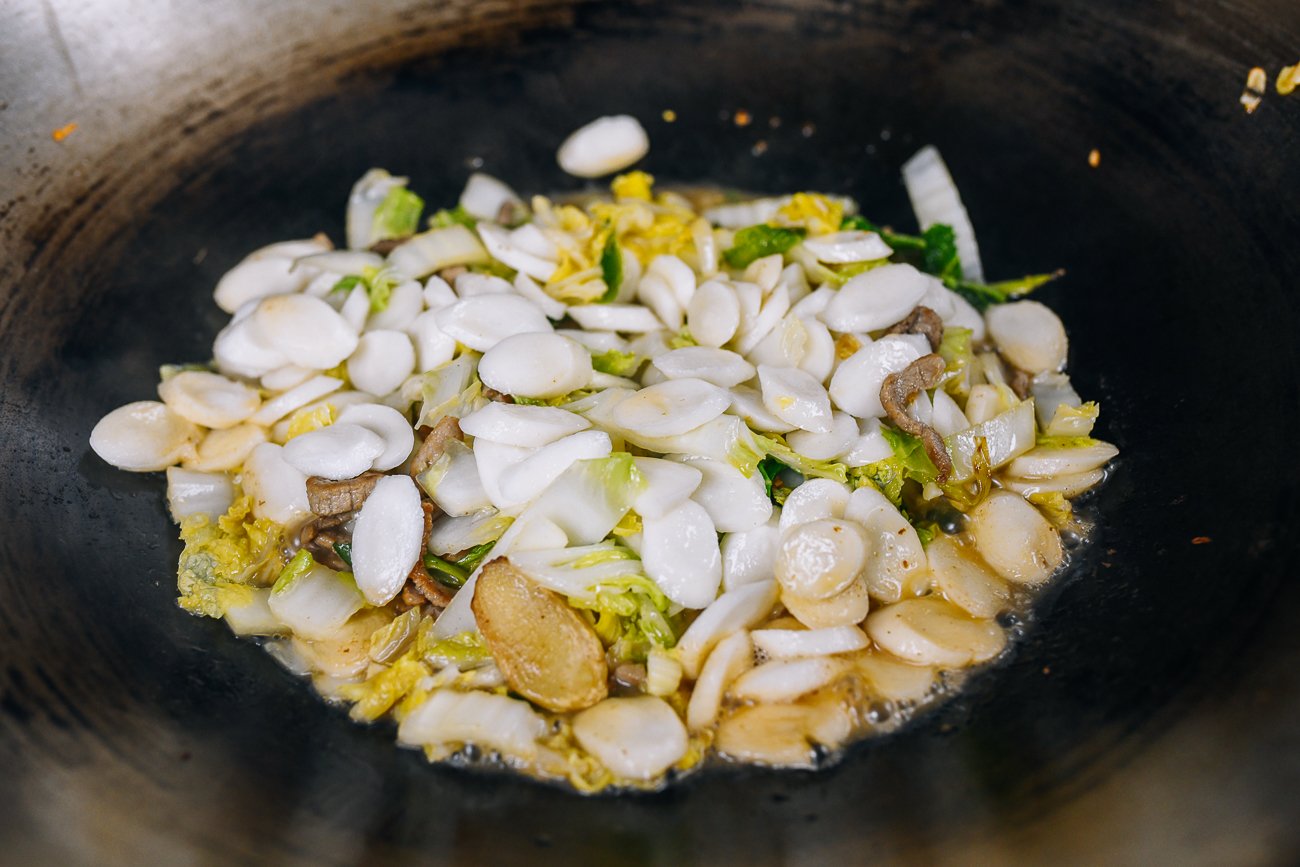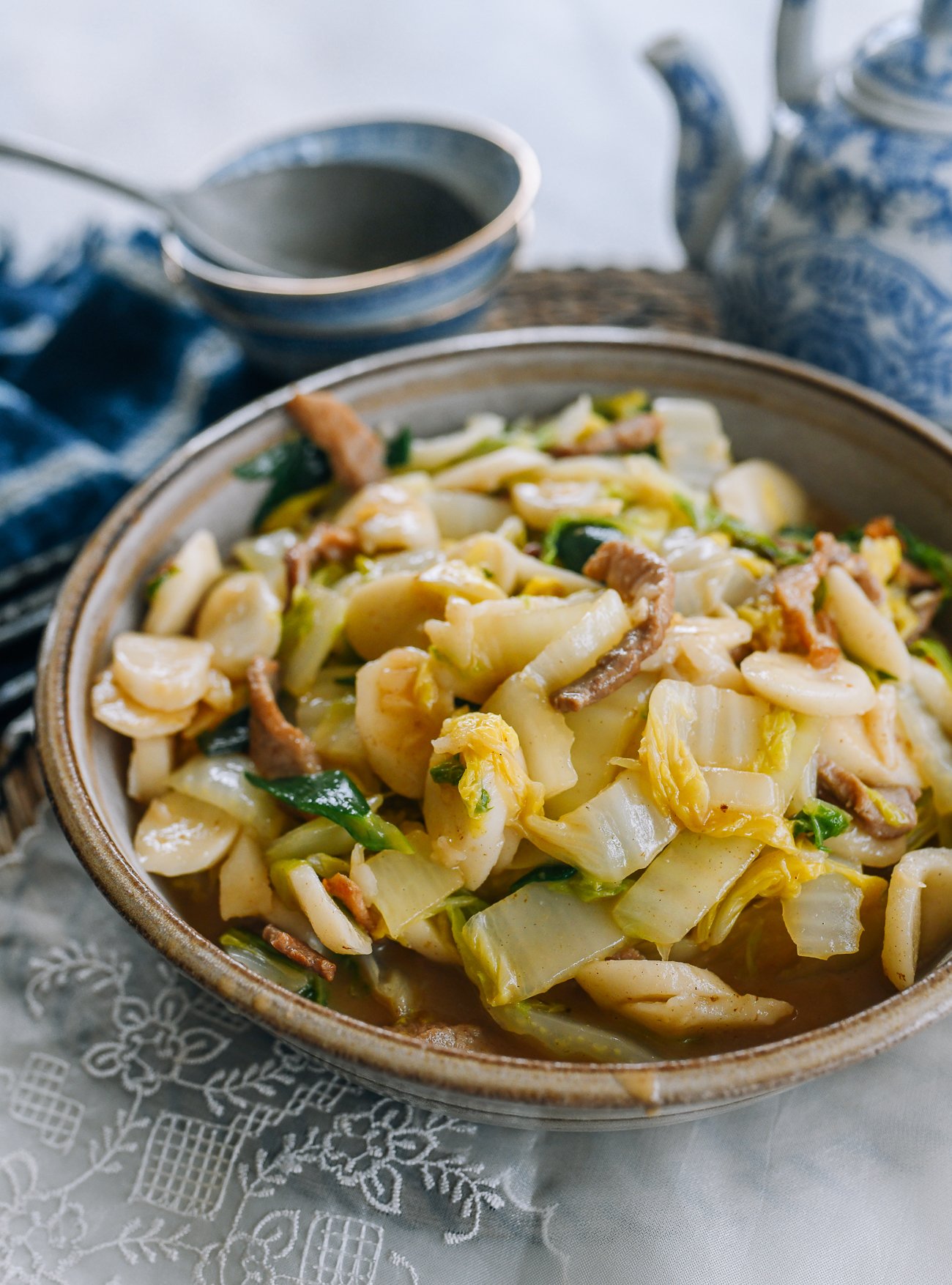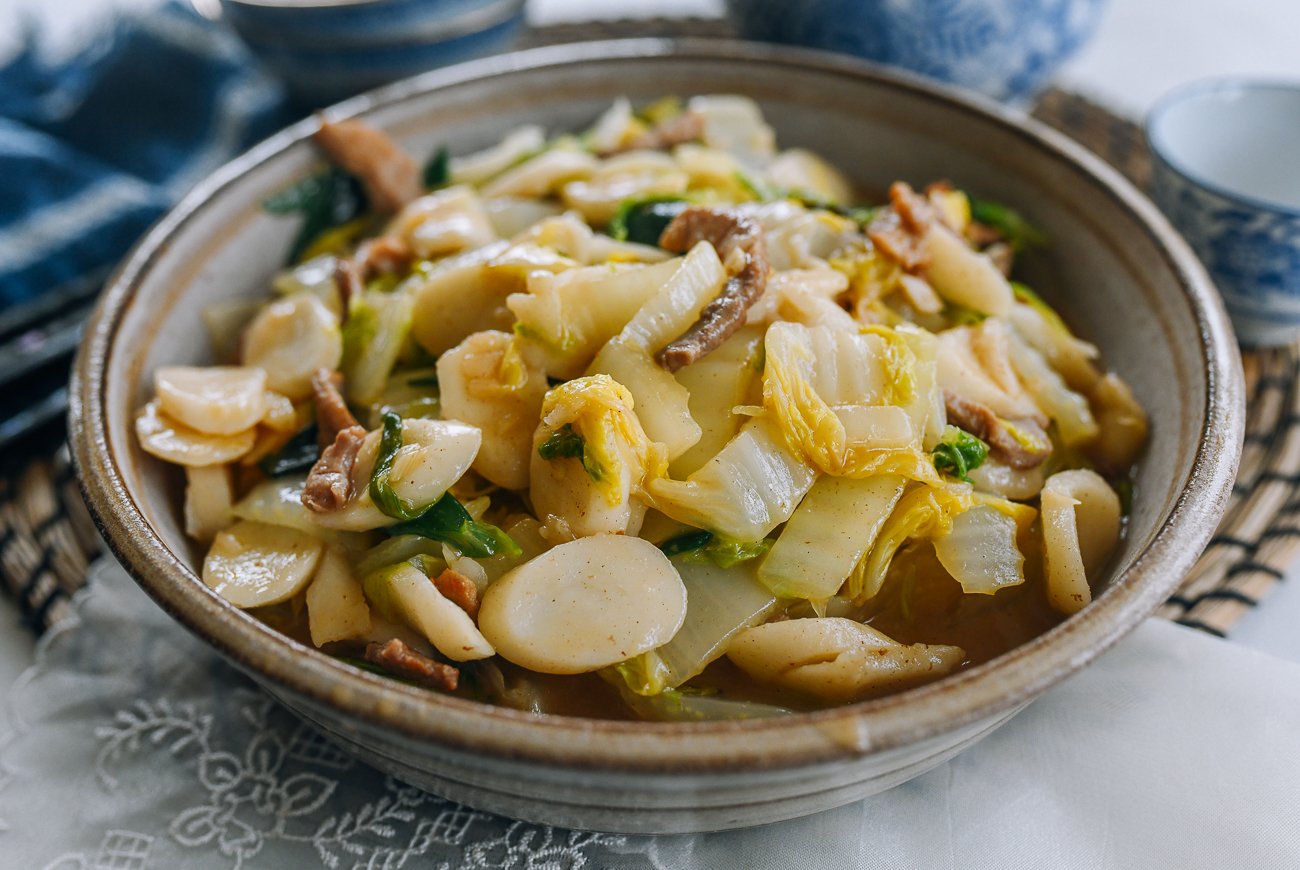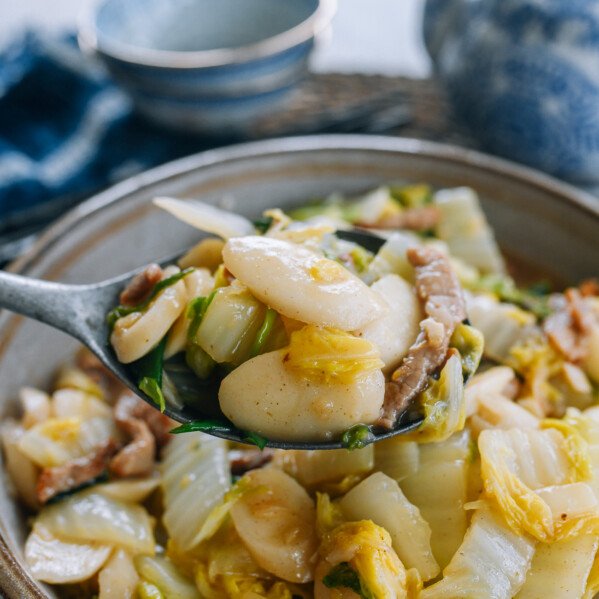Serve it for a satisfying lunch, a lighter dinner on its own, or as one of several dishes for a larger meal.
A Pure and Simple Rice Cake Stir-fry
The signature look of this dish is an almost glowing white appearance from the milky color of the rice cakes and the light green napa cabbage. We had a little bit of a debate on how much to stay true to that pure flavor and look, but ultimately Sarah won out with the addition of oyster sauce to the recipe. With my mom in agreement, I figure sometimes it’s worth bucking tradition. It makes the sauce a slightly darker hue, adding flavor without overpowering the dish. If you’re looking for more ideas to cook rice cakes, try these recipes:
Our Original Rice Cake Stir-fry (a reader favorite) Rice Cakes with Mixed Vegetables Chinese Rice Cake Soup Steak & Scallion Rice Cake Stir-fry Spicy Rice Cake Stir-fry Shanghai Stir-fried Rice Cakes with Shepherd’s Purse
Aside from the oyster sauce, a lot of the flavor comes from the use of chicken stock to cook the cabbage and rice cakes. When you stir-fry the starchy rice cakes, the stock thickens up into a sauce that coats everything.
肉丝 Rou Si – Why “Shredded Pork?”
In Chinese, you’ll often see stir-fries involving shredded pieces of meat, or 肉丝 (ròu sī). It’s usually shredded pork, but you may also see 牛肉丝 (niúròu sī), or shredded beef. For example, in this beef and spicy pepper stir fry. Having these tendrils of stir-fried meat makes for an enjoyable eating experience. There’s lots of surface area for flavoring the meat, and it’s easy to take bites with your chopsticks. There are instructions in the recipe for prepping your meat this way, but all in all, you just need a sharp knife to cut a larger piece of meat into thin slices, and then into strips. They don’t have to be perfect!
Recipe Instructions
Prepare the pork by cutting it into thin 2- to 3-inch (5-7 cm) long slices and then julienning the slices into strips. Transfer to a bowl, and add the water, cornstarch, light soy sauce, vegetable oil, sesame oil, and white pepper. Mix well and set aside. Meanwhile, prepare the napa cabbage, ginger, garlic and scallions. If your rice cakes are stashed in the freezer, take them out. If they’re vacuum sealed, open them up and break them apart if they’re stuck together. (We prefer the Chinese brands that are individually frozen and bagged loosely.) Heat a wok over high heat until it’s just starting to smoke. Add the oil, followed by the ginger. Let cook for 30-60 seconds, until golden on the edges. Then add the pork in one layer, and let it sear evenly. Avoid stirring it too much so it can get some color. Add the garlic, stir fry for 30 seconds. Then add the napa cabbage and scallions. Stir-fry for a few minutes, letting the cabbage wilt down. Add wine around the perimeter of the wok. Mix and stir-fry for another 30 seconds. Stir in the oyster sauce, and move everything to the center of the wok to create an even “bed” of vegetables and meat. Add the chicken stock and spread the rice cakes on top of the mound of cabbage. Cover and cook for 2 minutes over high heat (3 minutes if the rice cakes are frozen). Uncover, and season with salt and white pepper. Stir-fry everything together for 2 minutes over medium heat. The sauce will thicken and the rice cakes should be cooked through, but still have a pleasant chewiness. Plate and serve!
